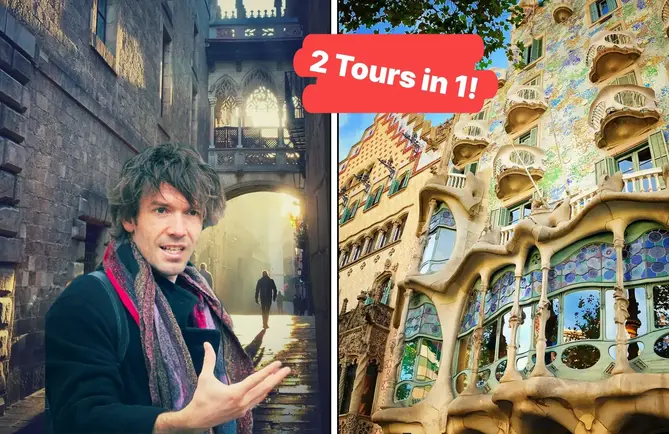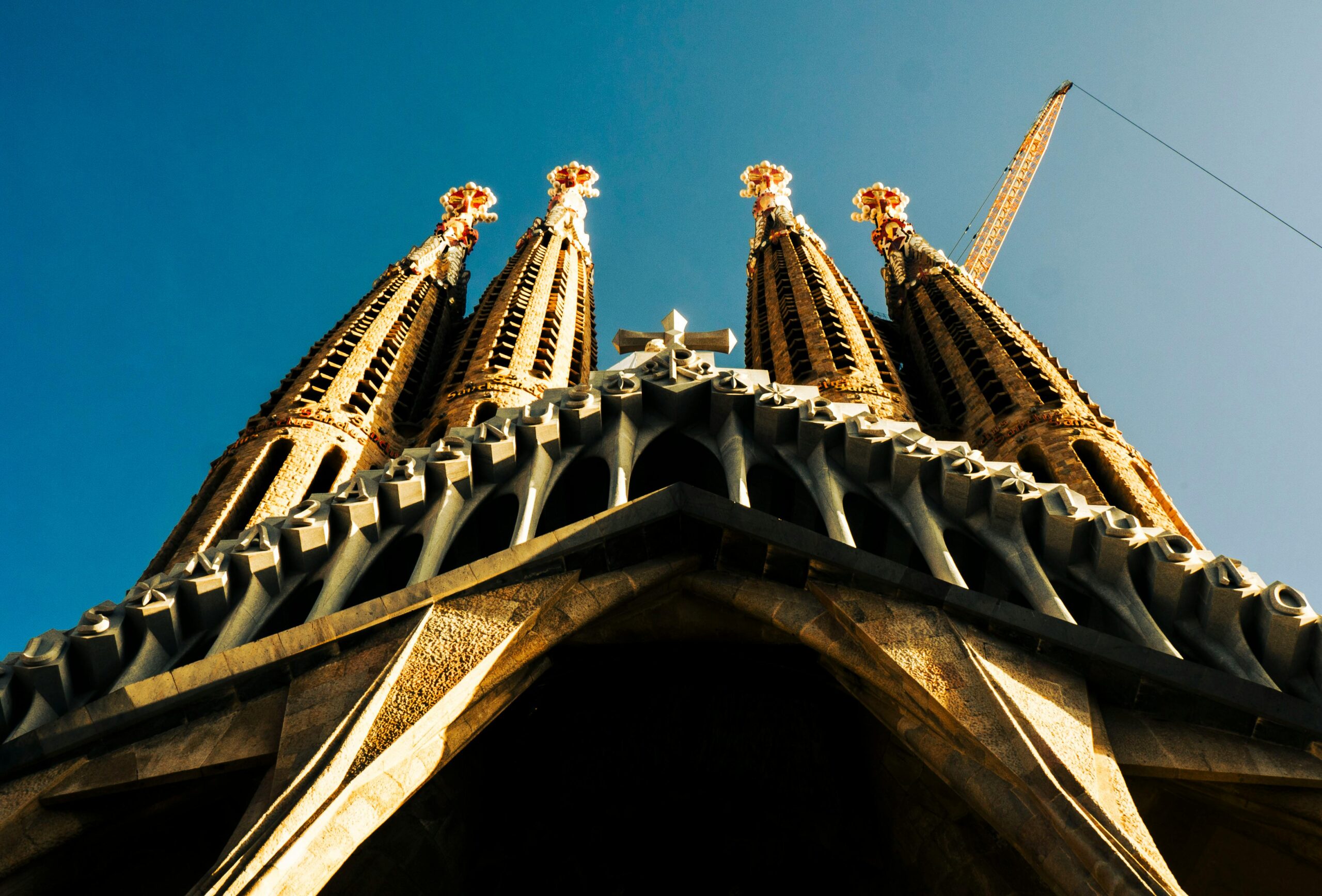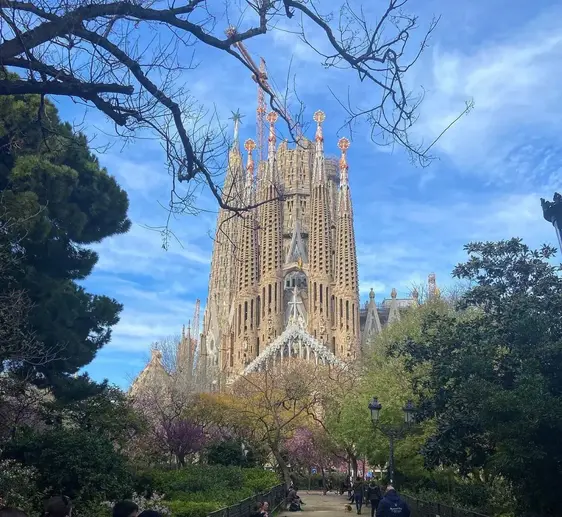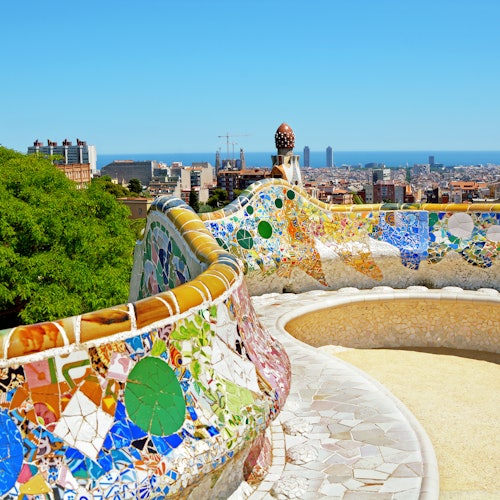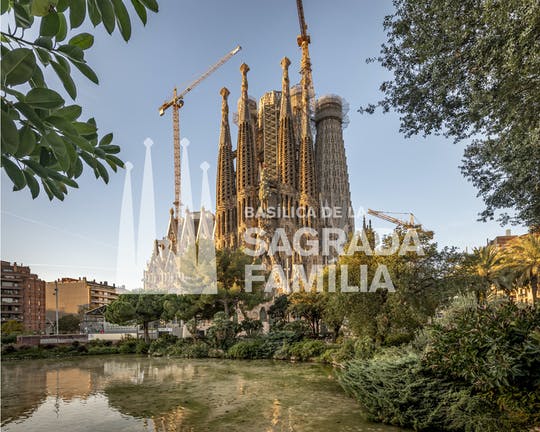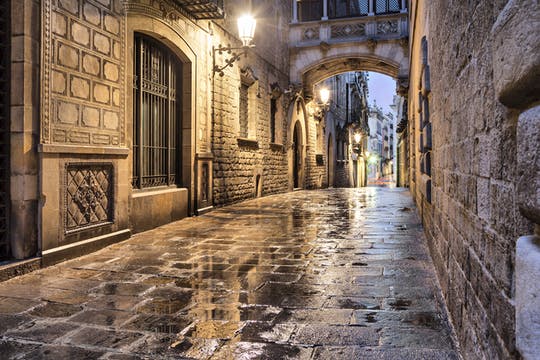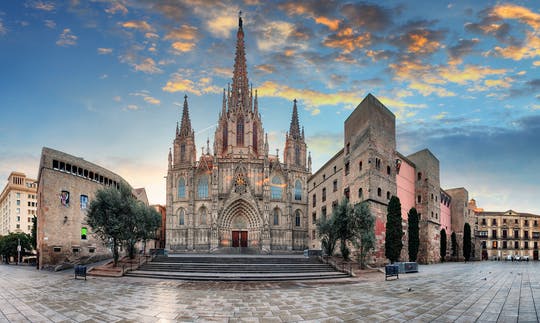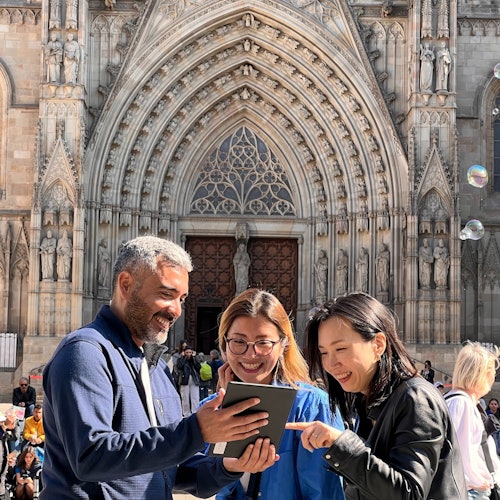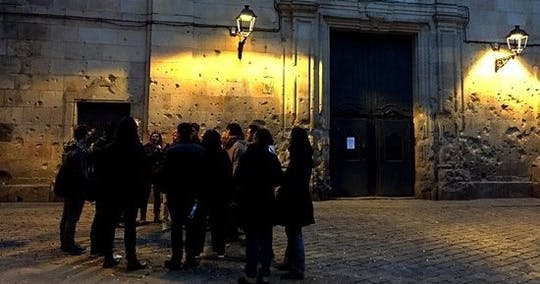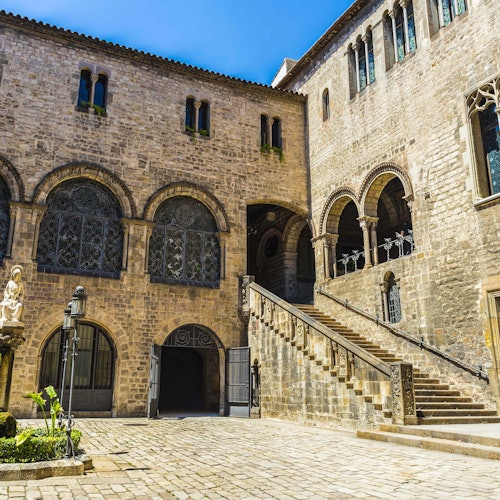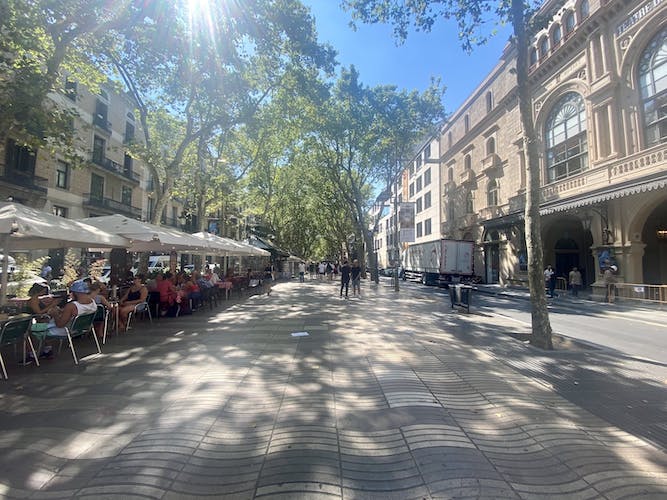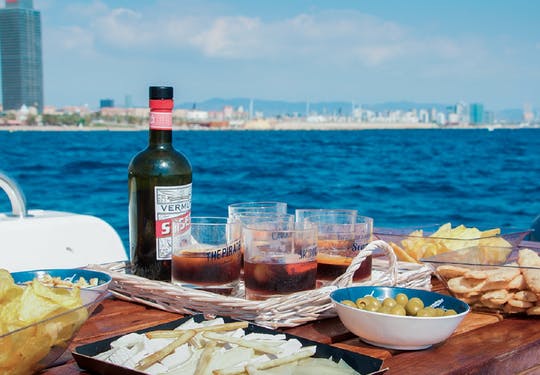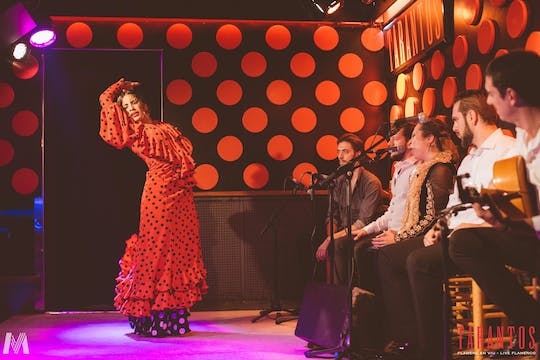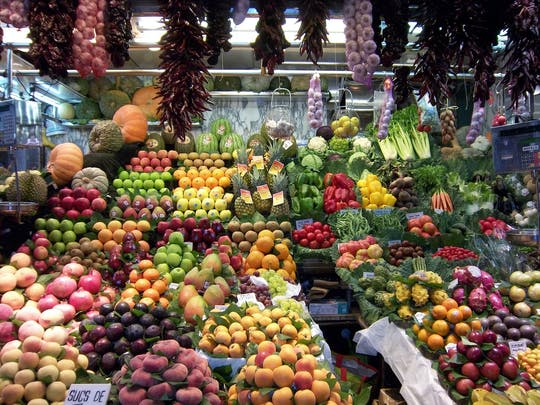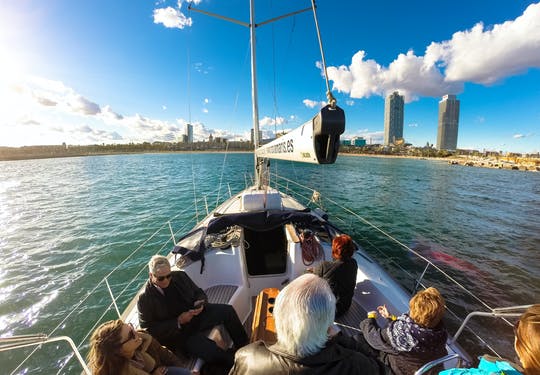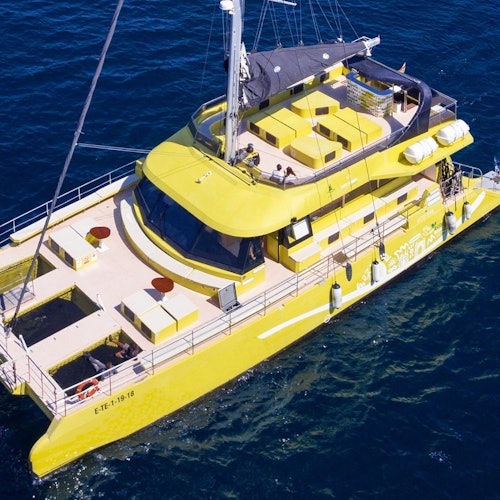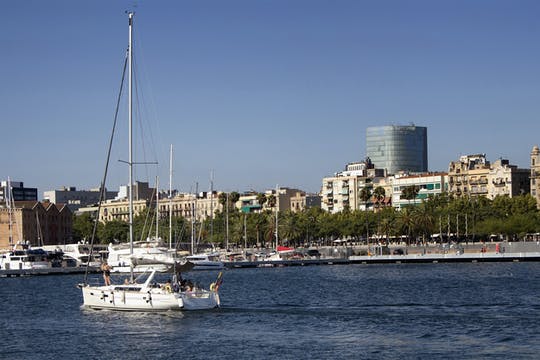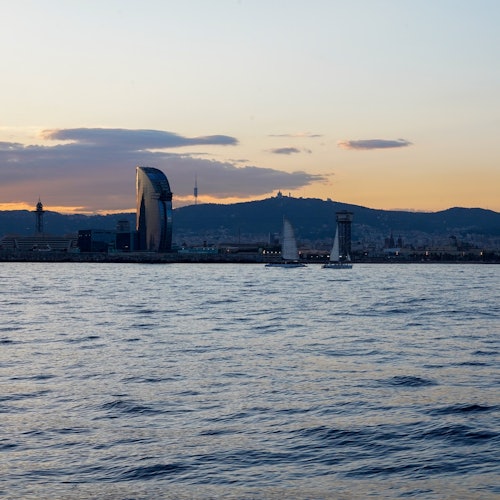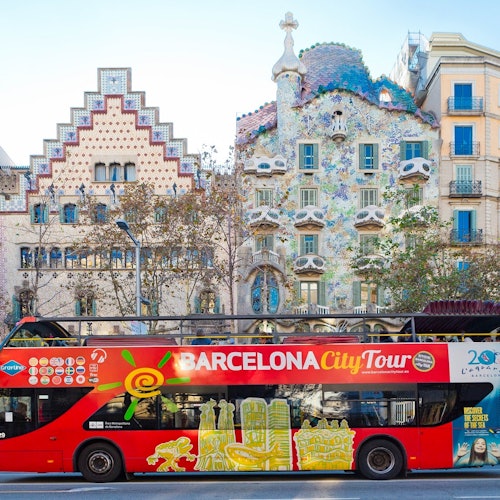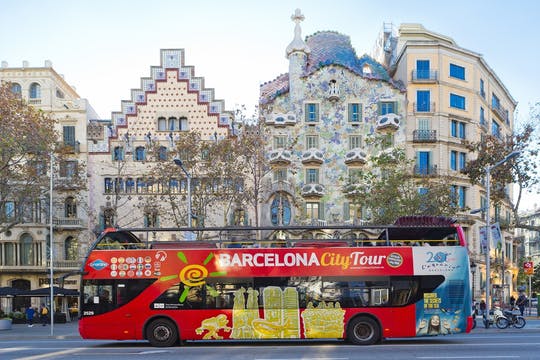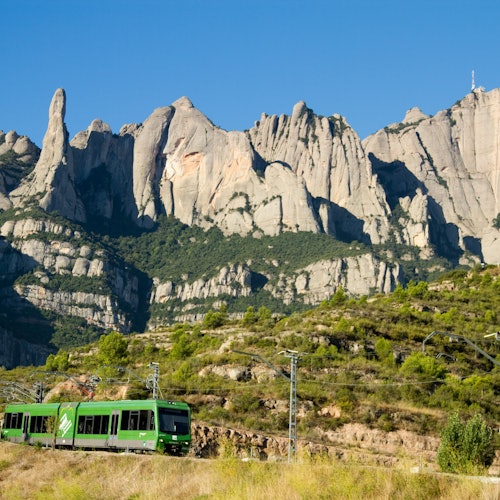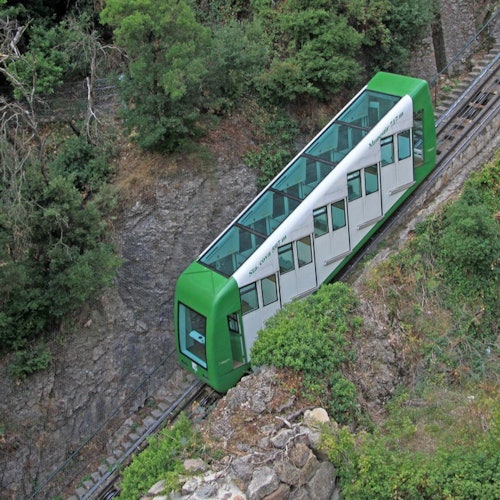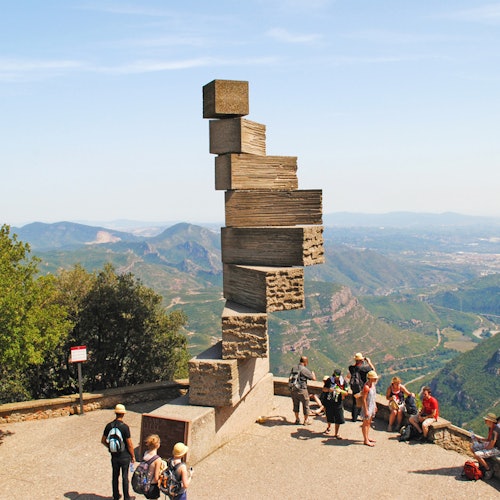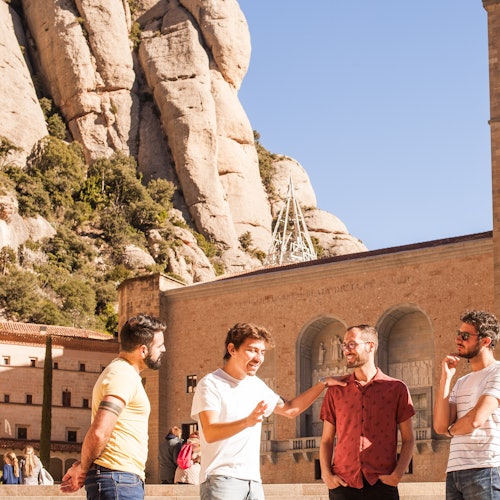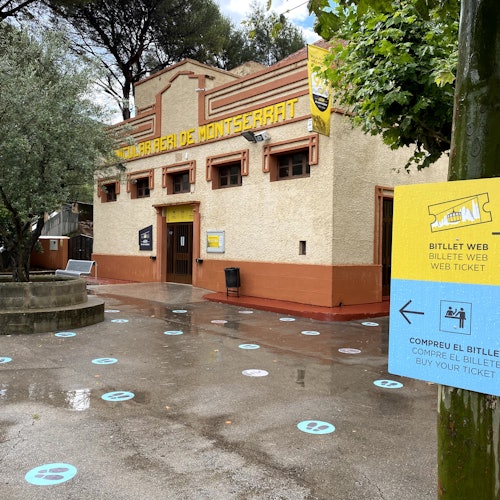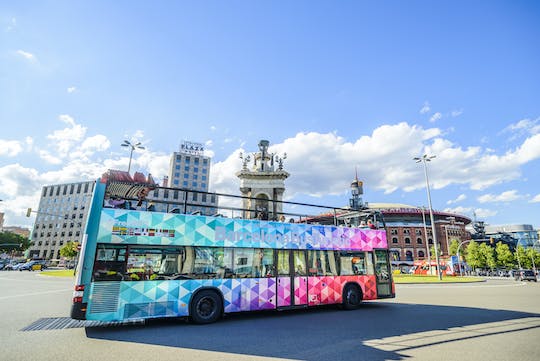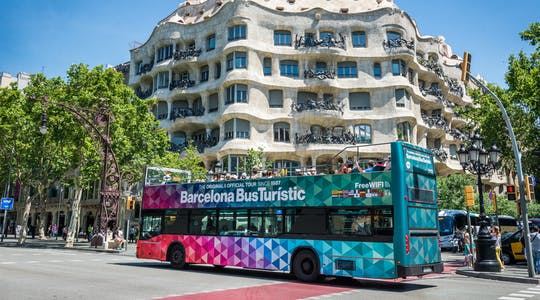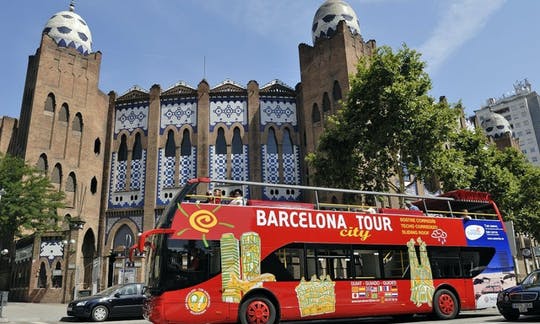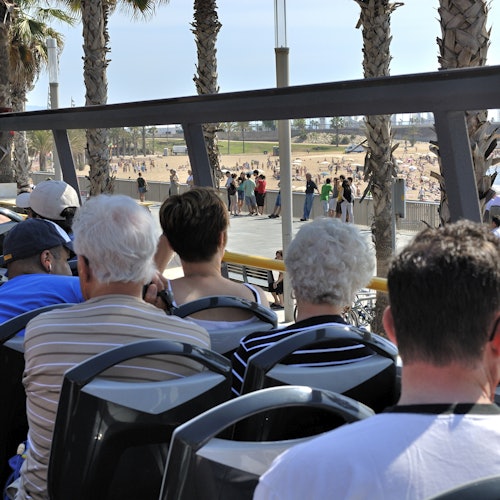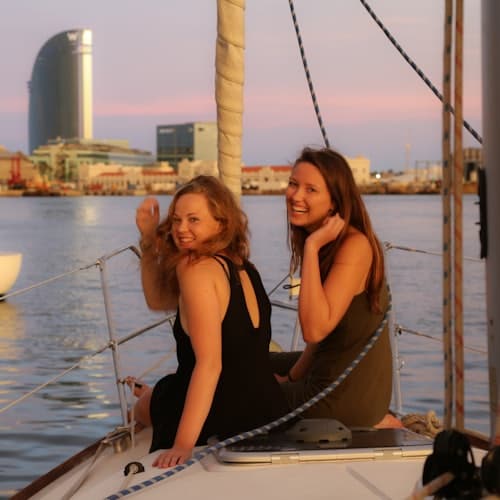Things to Do in Barcelona
Last update:
Things to do in Barcelona: Gaudí icons, local neighborhoods and sea breeze
Barcelona condenses a capital’s cultural weight into a city you can cross without ever losing sight of the sea. Between Gaudí’s impossible buildings, compact historic neighborhoods, city beaches with a real everyday crowd and a nightlife that starts when many places are already quiet, the question is less what to see and more how to fit it in. This guide focuses on the experiences travelers actually book with GuruWalk: flexible tours that help you read the city quickly, day trips that change the scenery without exhausting you, and evening plans that feel local rather than staged.
Gaudí highlights and Modernist Barcelona
Most first impressions of Barcelona start in front of the Sagrada Familia, under the mosaics of Park Güell or beneath the bone-like balconies of Casa Batlló and La Pedrera. A solid Gaudí experience is less about ticking façades and more about understanding how the architect stitched nature, religion and engineering into the city grid. Guided visits from GuruWalk focus on flow: you enter with timed access, spend unhurried moments where the light is best, and move between sites without burning half your energy in queues.
Gaudí-focused itineraries range from short, focused visits to Sagrada Familia to longer routes that link several houses and the park. Small-group formats let you ask questions, compare details between buildings and still keep time free for your own wandering. For travellers who like structure, combining an in-depth basilica tour with a panoramic Park Güell walk gives you both the story and the postcard view of the city.
Once you have seen the icons up close, modernist Barcelona continues along Passeig de Gràcia, in lobbies, lamp posts and rooftops that many people rush past. Choosing one of the collections on the Barcelona guided tours page helps you mix Gaudí with other architects, so you leave with a sense of the movement rather than a single name.
Gothic Quarter and old-town walking tours
In the Gothic Quarter and the lanes of El Born, distances shrink but stories multiply. Stones change texture every few steps, from Roman walls to medieval courtyards and small squares where locals still cut through on their way to work. Walking tours here are less about big monuments and more about learning to read balconies, graffiti and quiet corners that you would probably miss alone.
On GuruWalk you find budget-friendly introductions that cover the essentials and deeper thematic walks about legends, dark history or contemporary life. Morning departures show you delivery vans, school runs and shutters coming up; evenings shift the focus to tapas bars, street musicians and the way the city lights its stone. Either way, check GuruWalk's activity catalog to see the latest prices and schedules before you choose a route.
If you arrive with very little time, a compact loop around the cathedral, Plaça del Rei and Plaça Sant Jaume already explains a lot about power, religion and trade in Barcelona. With a bit more margin, guides stretch the route towards the waterfront or up to Sant Pere, adjusting the pace to the group and the season.
🧭 Practical tips for old-town tours
- Wear comfortable closed shoes; pavements are uneven and often slightly wet after street cleaning.
- Keep bags zipped and worn in front in bottleneck streets, metro entrances and around the cathedral.
- Ask for restaurant and bar recommendations at the end of the tour and mark them on your map straight away.
Tapas, wine and flamenco evenings
Barcelona’s evenings are made for tapas bars, market tastings and local wine. Joining a guided food walk or tapas crawl turns a confusing choice of menus into a coherent story: how people order, which dishes have seasonal versions and where locals actually stand at the counter. You taste a little in each stop, rather than sitting too long in one place and missing the change of atmosphere from street to street.
Food experiences on GuruWalk range from easy-going, budget-friendly strolls to more elaborate routes with market visits and cooking elements. Some end near live music, others close to the Gothic Quarter or Barceloneta so you can continue the night at your own rhythm.
If you are curious about flamenco, many visitors prefer smaller venues and combined experiences instead of huge stages. A focused tour that links tapas, a short walk through the old town and an intimate show makes the evening feel like one continuous plan rather than separate bookings.
Barcelona from the sea and the skyline
Seeing Barcelona from the water changes the map entirely: the skyline shrinks into a clean line of towers, hills and beaches. Catamaran outings, sailing trips and paddle surf sessions leave from the city’s marinas and quickly open up views towards Barceloneta, the Olympic Port and the modern towers that mark the financial district.
Boat trips on GuruWalk can feel relaxed and almost meditative, with soft music and a drink, or more playful, with chances to swim when the sea is calm. Early departures are usually quieter and flatter; late-afternoon cruises trade that stillness for warmer light and a sunset over the city.
For a full change of perspective, some experiences combine sailing with viewpoints on land, from Montjuïc to rooftop terraces in the centre. Moving between sea level and high terraces in the same day helps you understand how neighborhoods connect and where you want to return on foot.
Day trips from Barcelona: mountains and coast
When the city feels full, a day outside Barcelona resets the senses. The most popular options are Montserrat and its serrated mountain monastery, wine country with family-run cellars and the coastal villages of the Costa Brava. Travel times stay manageable, so you can leave after breakfast and return in time for a late dinner.
Each route has its own rhythm. Montserrat days focus on views, short walks and religious heritage, sometimes with a quick stop in a nearby town. Coastal excursions balance small coves, medieval streets and time to swim or sit on a terrace. In the vineyards, the pace slows further as you learn how local wine is made and taste directly at the source.
If planning this yourself feels like too many logistics, curated options on the day trips from Barcelona catalog join transport, guiding and free time. You can focus on the experience while someone else watches the timetable.
🧭 Practical tips for day trips
- Pack layers and a light rain jacket; mountain and coastal weather can shift faster than in the city.
- Choose closed shoes with grip for monastery steps, vineyard paths or cobbled streets.
- Confirm meeting points and return times the day before so you can align them with dinner reservations or evening plans.
Hop-on Hop-off: flexible city overview
Hop-on Hop-off buses turn Barcelona into a moving balcony. You ride between sights without worrying about navigation, listen to short explanations in your language and decide on the fly where to get off. For many visitors, this is the first contact with the city before diving into more detailed walking tours.
Used well, the bus is more than transport. You can trace an entire loop early in your stay, mark stops that feel interesting and later return on foot or by metro. The upper deck is ideal for quick photos of façades, hills and the coastline, even on days when you feel too tired for long walks.
GuruWalk groups together the main options on the Hop-on Hop-off Barcelona passes page, so you can compare routes, durations and extras in one glance and match them with the rest of your plans.
Frequently asked questions about Barcelona
What should I see in Barcelona for the first time?
For a first visit, prioritise Sagrada Familia and at least one Gaudí house, a walk through the Gothic Quarter and El Born and some time by the sea in Barceloneta or along the promenade. With those pieces you already understand how the city mixes history, design and everyday life; everything else you add is a bonus.
What is Barcelona best known for?
Barcelona is best known for its modernist architecture led by Gaudí, its compact historic centre facing the Mediterranean and a lifestyle built around food, outdoor terraces and late evenings. Many visitors also remember how easy it is to switch from city streets to beaches, hills or villages on a simple day trip.
What to do in Barcelona not touristy?
For a less touristy feel, spend time in Gràcia, Sant Antoni or Poblenou, where you still find traditional markets, independent shops and squares full of neighbours. Joining a themed walk with a local guide helps you spot workshops, cultural centres and bars that do not appear on standard lists, while still keeping you in well-connected areas.
What is the best tourist street in Barcelona?
La Rambla is the most famous and busiest street, full of movement from morning to late night. Many travellers, however, end up preferring Passeig de Gràcia for its architecture or the narrow streets of the Gothic Quarter, where the scale is smaller and the light more dramatic.
Where not to go in Barcelona?
There are no official no-go areas, but some sections around La Rambla, El Raval and the beachfront can feel intense late at night because of crowds, bars and pickpockets. Common-sense rules help a lot: keep bags zipped, avoid displaying valuables in very crowded spots and use well-lit, busier streets when walking back to your accommodation.
What is the tipping etiquette in Barcelona?
In Barcelona service is usually included, so tipping is optional rather than automatic. Locals tend to leave small rounded-up amounts in cafés and casual restaurants and something extra after an especially good tour or dinner. When in doubt, follow what you see people doing around you and check GuruWalk's activity catalog to see the latest prices and what each experience already includes.
What to wear in Barcelona to not look like a tourist?
Locals lean towards simple, well-fitted clothes and comfortable trainers rather than hiking gear or beachwear in the city centre. Avoid walking around town in swimwear, keep sports shorts for the beach or parks and bring a light jacket or layer for cooler evenings, especially outside the warmest months.
Do I need to carry my passport in Barcelona?
Authorities can ask for identification, so it is sensible to have some form of ID on you. Many visitors keep the original passport in their accommodation and carry a photocopy or digital copy plus another official card. Check the conditions of your activities, since some premium tours or day trips may ask to see an original document before boarding.
Are tourists unwelcome in Barcelona?
Debates about overtourism exist, especially in central neighbourhoods, yet most people working in tourism depend directly on visitors. Choosing smaller-group experiences with local guides, respecting quiet hours and supporting businesses beyond the most famous streets helps your presence feel more welcome.
How to not get mugged in Barcelona?
Barcelona has petty theft in the busiest areas, so act as you would in any big city. Use a cross-body bag that closes properly, avoid leaving your phone or wallet on café tables, keep a hand on your backpack in metro crowds and pay attention to distraction tricks. Walking with a local guide on your first day also gives you a clear sense of which habits keep you safer.
About the author

Author: Belén Rivas, GuruWalk
Publication date: 2025-11-28
Data updated as of November 2025
